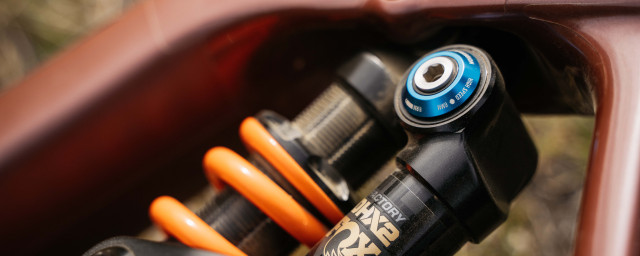How to install a mountain bike fork

Upgrading your fork can give your bike a huge boost in front-end stiffness, increased adjustability and general suspension performance. Fitting a fork is a reasonably easy process too, but a few things could prove costly if things go wrong. In this guide, we’ll outline each step you need to take to install a new fork successfully.
- Volume spacers - what are they and how they work
- How to bleed SRAM, Hayes and Magura brakes
- How to clean disc brakes on a bicycle
Fork installation is a task that requires a surprising number of tools and some are specific to the task. While the job is fairly straightforward forward, if things were to go wrong, it’ll result in a hefty repair bill or a whole new fork. So if you’re not confident with working on your bike take it to your local mechanic. If you’re happy to go ahead, read on.
What you’ll need
- Your new fork
- Star-fangled nut (often supplied with fork)
- Crown race corresponding to your headset
- Crown race setting tool
- Vice with a soft jaw
- Files and/or a deburring tool
- Soft faced mallet
- Threadless nut setter
- Hacksaw
- Saw guide
- Scribe or sharp-scoring object
How to install a mountain bike fork
1. Measure your fork's steerer tube
Your first step is the most important of the job, so take care to get this right. There are two ways to measure your fork steerer and transfer that measurement to your new one, marking the new steerer with something sharp.
Or you could semi-install the new fork with the stem and spacers where you would like them and score where they end. If you measure this way, you’ll need to cut slightly below your mark to allow space for the compression and preload of your headset.
2. Cut the steerer tube
Here, you’ll need to use a vice and a saw guide to achieve the straightest cut. Place the saw guide into your vice and fork steerer into the saw guide, lining up the mark you made with the slot in the guide where you’ll place your saw. At this point, take your time to make sure your mark is in the right spot as this is the last chance to check your measurement before you make the irreversible cut.
Measure twice, cut once.
3. Clean up the cut surface
Now that your steerer is cut down to size remove any burrs and sharp edges. You can do this using files of varying shapes and sizes. Not only could these cut you when fettling with the fork but stray, jagged threads of metal can interfere with your stem and spacers when installing them. The smoother the better.
4. Install your crown race
Generally an easy part of the job but one that can become a handful without the correct tools is setting the crown race. Before getting anywhere with this one though, you’ll need to make sure that you have the correct crown race for your headset. This will ensure that the bearings will roll smoothly, the headset will be stable and that the correct preload will be put onto the headset upon installation.
Using a purpose-built crown race setting tool will yield the best results and easiest installation but it can be done with makeshift tools or a soft-faced mallet. Using a proper tool, you sit the crown race in place, put the tool over the top and knock it down. The exact same can be done with a piece of PVC tubing that’s the correct size but, of course, it’ll be much softer than a proper tool, so the tubing may break before the race is set on particularly tight-fitting crown races.
This can be done using just a soft-face mallet. Doing so will require you to tap softly around the upper circumference of the crown race until it’s sat in place. Be careful if you take this route as it could damage both your steerer and the crown race.
5. Tap in the star-fangled nut
Using your threadless nut setting tool, thread the star-fangled nut onto the threaded end and place both parts of the tool on top of your fork's steerer. Then, simply hit the top with a hammer until it goes no further.
If using a compression bung, or steerer tube integrated multitool a star-fangled nut may not be required.
6. Install your fork
Now the hard work has been done, it’s time to attach your fork to the bike. Although, this is also an excellent opportunity to service your headset and give it a good clean beforehand.
7. Set up your fork and ride
As we have a guide on this already, we won’t go too deep into how to set up your mountain bike suspension but now the job is done; get riding.














